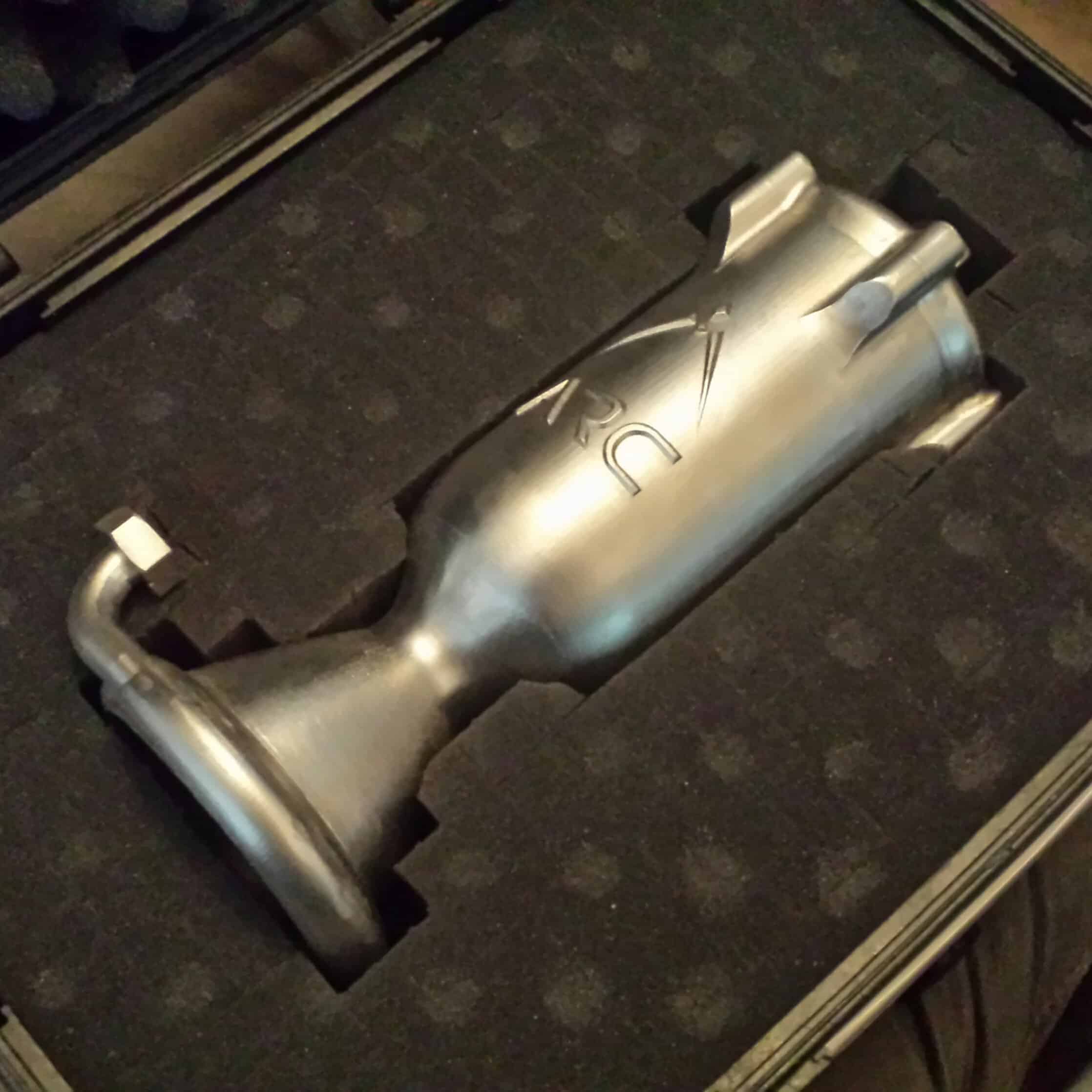ARC Accelerates Time-to-Market of Thrusters by Over 50% with Rescale
“Rescale has allowed the team at ARC to change the way propulsion systems are designed by enabling a simulation-informed design methodology, without the added time or cost typically associated with big compute.” – Kyle Adriany, Founder and CTO of ARC
About Additive Rocket Corporation (ARC)

ARC is an innovative aerospace company that 3D prints metal rocket engines for the expanding space industry. They leverage additive manufacturing and industry-leading scientists to create high performance propulsion components. Additive manufacturing is the process of successively binding layers of various materials together to create complex, fluid systems that were previously infeasible with standard manufacturing methods. To design and direct the manufacturing of these complex systems, ARC utilizes ANSYS Fluent, Mechanical, and Additive Print to perform CFD, FEA, coupled thermo-structural, and thermo-fluid simulations. Coupling extensive high performance computing (HPC) and additive manufacturing methods, ARC is able to create propulsion systems in one-tenth the time of competitors and at 50% the cost. ARC is innovating the manufacturing and design process for essential components to further (and more affordably) explore space.
The Challenge
In order to accelerate their product development and better compete with SpaceX and Blue Origin, they needed to run an exceptionally large number of simulations. They were equipped with a local on-premise HPC system with 50-128 cores at 80% utilization. The constraints that ARC recognized were the lack of scalability in computing resources and agility in resource diversity. The lack of computing resource diversity and capacity severely limited ARC’s simulation-throughput and design of experiments (DOE). ARC recognized that this bottleneck in their product development pipeline severely delayed their potential time-to-market. Faced with the urgent demand for more computing resources, ARC had to decide between investing in a static on-premise HPC system or moving to a cloud-enabled HPC system.
Why Rescale

ARC considered several options to scale their computing resources such as expanding their local on-premise HPC system or using bare-metal cloud resources. Ultimately, they found the alternative options to be inadequate for their demands and decided to commit to Rescale for the following reasons:
- Rescale provides the ability to access a near-infinite inventory of the latest cloud computing resources, instantly.
- Access to multiple cloud providers offers a diverse inventory of computing hardware from AWS, Azure, Google Cloud, and IBM, which allows users to select the optimal computing resources for specific applications.
- Coupling the latest HPC cloud hardware with +350 ported and tuned applications creates an unrestricted HPC environment.
- Due to extensive partnerships, Rescale accepts a broad range of computing credits from hardware and software providers.
- Rescale’s easy-to-use, simulation-centric platform makes software integration, deployment, and use extremely simple when compared to open source cloud platforms and on-premise HPC systems.
- Rescale’s Application Programming Interface (API) allows for direct interaction and modification of applications within the platform.
- Rescale automates and simplifies +30 IT activities required to perform a single simulation.
- Rescale provides comprehensive support throughout the deployment of the platform and submission of simulation jobs.
In summary, ARC committed to Rescale because they recognized the value in the platform’s scalability, agility, ease-of-use, credit transferability, back-end programmability, and support team.

Results of ARC and Rescale
ARC’s experience with Rescale’s platform has resulted in significant improvements to their product development cycle:
- A 475% increase in simulation-throughput by utilizing the latest computing resources that are optimized for their specific applications.
- Overall engine development time decreased from 6-12 month to 2-3 months.
- Access to cloud resources enabled ARC to instantly scale from 50 cores on-premise to +500 cores.
- Limitless computing resources and diverse architectures allowed ARC to perform a DOE simulation involving thousands of design iterations; an experiment that would not have been practical outside of the Rescale platform. The new DOE enabled them to reduce the weight of their thrusters and components by 50% and decentralize their simulation engineering workforce.
In summary, Rescale’s easy-to-use platform has significantly impacted the efficiency of ARC’s engineering department, redesigned the staffing requirements, and has cut their product development time in third.
“In the future, we hope to take advantage of the other software tools available on the platform and move most, if not all, of our simulation workflows onto Rescale.” – Kyle Adriany, Founder and CTO of ARC
